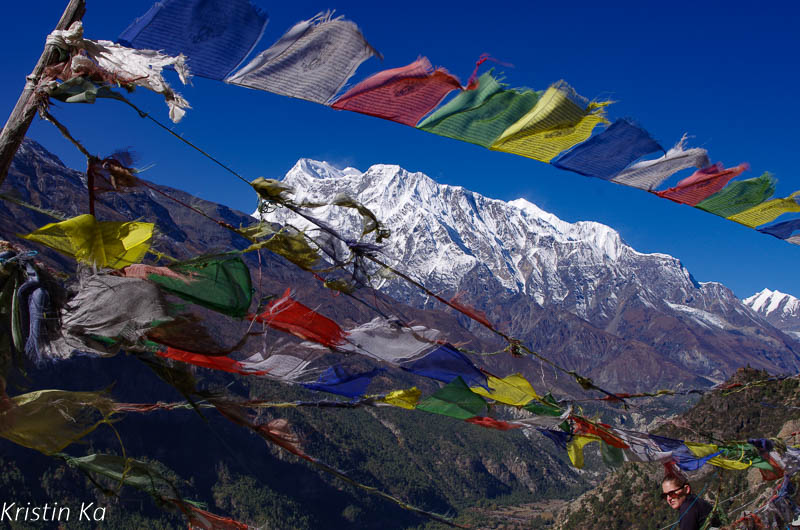What traveller doesn’t dream of going trekking in the fabulous mountains of Nepal?
When we talk about Nepal and these wonderful mountains, there are often stars in the eyes of the audience. However, those who would like to, often say to themselves that they cannot. So let’s see if you really have to be cut like Mike Horn to go for a breath of fresh air in the Himalayas and make one of the most beautiful treks of your life.
A trek in Nepal does not require GI training. If you are already used to walking and are in good physical condition, the trek should go smoothly. But…
A trek in these mountains takes time. You have to be able to stop whenever you want, or whenever you have to
In Nepal as on all the other mountains of the world, the weather plays an important role, it is not to be taken lightly
The altitude in Nepal modifies a lot the rhythm of walking
How much time should you plan for a trek in Nepal? There is no universal equation, the walking time varies according to each person
Walking on the roads of Nepal takes more mental and time than physical fitness
The commandos of the show-off make me feel sorry for them. Why go so far, in a country so touchingly beautiful, with an incredible culture, to look only at these shoes?
It’s almost scandalous. So many of them have only the performance in mind that I end up believing that I am from another planet. In the evening, they roll out the cards or consult the technology monsters to “do their average for the day”.
They never take the time to meet a farmer or children and be curious about them. There is in this attitude a kind of arrogance, a hurtful egocentricity for the Nepalese who are superbly ignored by these herds of two-legged donkeys dressed by The Nord Face.
On this trek, show civic-mindedness and respect
If you do not have much experience of hiking, find out about the basic rules beforehand. Be respectful of the porters, the guides and all the people who make their living from this type of tourism. Not only be polite, it should go without saying, but show them attention, if only with a smile.
Be flexible. Asking for beers, pizzas or chocolate bars at 5000 m altitude is downright stupid. All this merchandise is ridden on men’s backs to satisfy capricious tourists. What’s more, these yuck and industrial goods produce waste that will never be recycled.
If for these few weeks of your life, you took the fold of the locals by savouring morning, noon and evening yak butter chapatis, dal-bhat and omelettes? Tea that hydrates and warms, yak cheese made by the farmers, vegetables produced in the Nepalese fields. This is also adventure.
Do you have to take a guide and a porter to make this journey?
Usually trekkers take both: a guide and a porter. But you can take only a guide or a porter. It depends on you. Having a guide is comfortable. He will take you where you need to go and will also give you information about his country, traditions and culture. With a guide you leave nothing to chance.
If something should happen to you, a twisted ankle or a cold, a guide is there to support you and get you out of this bad situation.
To have a guide is also to submit to an itinerary, an authority and a rhythm. Moreover, if you don’t get along with him, you will have to stay with him all along the circuit. There is no chance of leaving him on the road.
This guide and porter will be provided to you by a trekking agency, usually from Kathmandu or Pokara. These people will tell you that leaving without a guide is suicidal. That you will never be able to carry on your little shoulders everything you absolutely need up there. It’s normal, it’s their job, their daily livelihood. But I don’t agree with them.
Beware of trekking scams
It is common to overestimate the number of days it will take you to complete the trek. The travel agent will always add more days. It’s both prudent and pleasant, but sometimes it’s just to make money off you and the porter.
The guide will tell you that you are a force of nature and that you are so fast that you can speed up the pace.
Morality you will return to Kathmandu with 3 days in advance… that you will not be refunded of course. 12 days charged 15, it’s profitable.
Depending on the case, the trek is reasonably calculated but to earn on food and men’s salary, the guide will ask you to speed up the pace for a lot of misleading reasons: there is no more plane from Lukla, the weather conditions will get worse, no more room in the lodges…
Your porter, who is the last rung before the dregs of humanity for these exploiters, will sometimes have to walk faster and will not earn a penny on the profit made.
A porter means safety. If you already feel that the trek will weigh you down without luggage, don’t hesitate, hire one
Nepal is an extremely poor country, 40% of the population lives below the poverty line
You can hike on your own, it’s possible, the decision depends on each one of you




















Shoes are one of the most important accessories in your luggage. Without feet, you can’t go anywhere. Here are some tips to follow so that they can accompany you for a long time!

